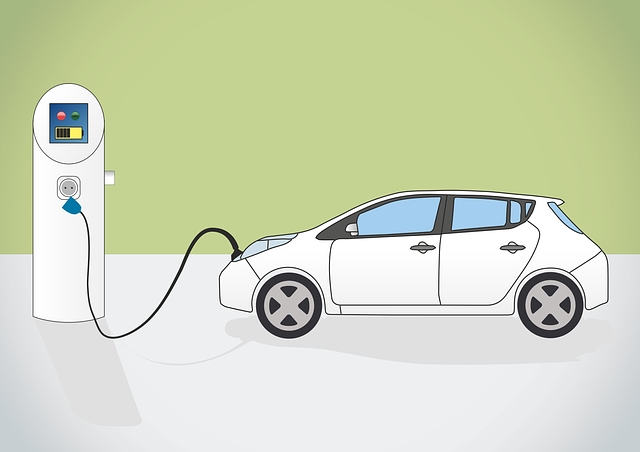When moving to a new state and bringing an out-of-state car along, it's crucial to understand the DMV's out-of-state vehicle registration process specific to your new location. This involves researching the unique requirements and documentation needed, which can vary from state to state. Essential documents include proof of residency, car title, previous registration card, proof of insurance, and possibly passing a safety or emissions inspection. Visit the DMV in your new state with these documents to complete the application for out-of-state car registration, including any required fees. Some states issue a temporary permit during the transition period. Upon approval, you'll receive new registration documents compliant with your new state's regulations. For a hassle-free experience, utilize comprehensive checklists and resources available online to guide you through every step of the process, ensuring legal compliance and avoiding penalties. Remember that fees for registering an out-of-state car can vary, and additional requirements like emissions or safety inspections might be necessary. Preparation is key to a smooth transition when transferring your out-of-state car registration.
Navigating the out-of-state car registration process can be a complex task, but with the right information, it’s a straightforward journey to legal road use in your new state. Whether you’re moving across the country or have acquired a vehicle from another region, understanding the DMV requirements for out-of-state car registration is key. This article demystifies the process by breaking down each step, from verifying proof of residency and vehicle inspections to submitting essential documents like your title and previous registration, along with proof of insurance. We’ll guide you through the nuances of fees for registering an out-of-state car, inspections, and even offer tips on complying with out-of-state emissions testing requirements. With our detailed checklist and comprehensive guidance, you’ll be equipped to efficiently transfer your registration and adhere to your new state’s regulations. Embark on this transition with confidence using our resources tailored for those looking into the how to register an out of state car or dealing with moving with an out of state car. Let’s drive through the process together, ensuring your vehicle is properly registered and ready to hit the road legally in your new location.
- Understanding DMV Requirements for Out-of-State Car Registration
- Step-by-Step Guide to Transferring Out-of-State Car Registration
- Navigating Fees and Inspections for Out-of-State Vehicle Registration
- Essential Tips and Resources for Registering Your Out-of-State Car in a New State
Understanding DMV Requirements for Out-of-State Car Registration
When navigating the out-of-state car registration process, understanding the specific requirements set forth by your new state’s Department of Motor Vehicles (DMV) is crucial. The DMV out-of-state vehicle registration process can vary significantly from one state to another, so it’s essential to research and prepare for the transition. Typically, to register your vehicle in another state after moving or purchasing a car from out of state, you’ll need to gather several key documents. These often include proof of residency, which establishes your new domicile within the state, as well as your car title and previous registration papers. Additionally, you may be required to submit proof of insurance and pass a vehicle inspection to ensure it meets the safety standards of the new state.
The fees for registering an out-of-state car can also differ across states, so be prepared for any additional costs. Some states may have specific emissions testing requirements or other regulations that your vehicle must comply with before you can transfer your registration. To facilitate a smooth transition and avoid any legal complications, it’s imperative to address these state-to-state differences promptly. Our comprehensive checklist at [Your Website] is designed to guide you through the entire process, from understanding the necessary DMV requirements for out-of-state car registration to ensuring that your vehicle adheres to all local regulations. This resource will help you complete the how to register out of state car process efficiently and legally, allowing you to hit the road without delay. Whether you’re obtaining a temporary permit or need to transfer your entire registration, our guidance is tailored to assist you in complying with the new state’s laws and requirements.
Step-by-Step Guide to Transferring Out-of-State Car Registration
When transitioning to a new state with your out-of-state car, it’s crucial to navigate the DMV out of state vehicle registration process efficiently. The first step is to familiarize yourself with the registration requirements and fees specific to your new residence, as these can vary significantly from state to state. Typically, you’ll need to gather documents such as a valid driver’s license from your new state, proof of car insurance that complies with local laws, the vehicle’s title, and your current car registration. Additionally, you may be required to pass a state-specific emissions test or safety inspection to ensure your car meets the environmental and safety standards of your new state.
Once you have all the necessary documents, you can proceed to apply for transferring out of state car registration at the DMV office in your new state. The application process often involves completing the appropriate forms, submitting your paperwork along with any required fees for registering an out-of-state car, and waiting for approval. Depending on the state, you might receive a temporary permit that allows you to operate your vehicle legally while your full registration is being processed. After your application is accepted, you will be issued new registration documents, reflecting your current state of residency. It’s important to complete this process promptly to avoid any lapse in registration that could lead to fines or legal issues. For a smoother transition and personalized guidance tailored to your specific situation, our comprehensive checklist on how to register an out-of-state car can be an invaluable resource. This guide walks you through each step, from understanding the fees for registering an out-of-state car to ensuring that your vehicle adheres to all necessary local regulations.
Navigating Fees and Inspections for Out-of-State Vehicle Registration
When transitioning an out-of-state vehicle to a new state, understanding the fees and inspections associated with the DMV out of state vehicle registration process is crucial. Each state has its own set of rules regarding the transfer of car registration, which can include specific vehicle inspections and a variety of fees for registering an out-of-state car. Typically, you’ll need to present proof of your new state’s residency, along with a completed application for vehicle registration, the out-of-state title and registration, and proof of insurance that complies with the new state’s minimum requirements. Some states may require an emissions test or a safety inspection to ensure the vehicle meets their environmental and safety standards. These inspections are designed to verify that your vehicle is in good working order and safe to operate on public roads within the new state.
The fees for registering an out-of-state car can vary significantly from one state to another, and may include not only the standard registration fees but also additional charges such as title transfer fees, sales tax on the vehicle’s value if applicable, and any prorated amounts based on the time of year you are registering. To navigate these requirements seamlessly, it’s advisable to research the specific DMV out of state vehicle registration procedures for your new state prior to relocating or purchasing a vehicle. This preparation can help you avoid delays and ensure that your registration transfer is completed without complications. For those who are moving with an out-of-state car, having a clear understanding of the process and the associated fees will facilitate a smoother transition onto the roads of your new residence. Utilizing a comprehensive checklist for how to register an out of state car can alleviate the stress of this often daunting task, allowing you to focus on the exciting changes ahead.
Essential Tips and Resources for Registering Your Out-of-State Car in a New State
navigating the out-of-state car registration process can be a complex task for new residents or those purchasing vehicles from different states. To ensure a smooth transition, it’s crucial to familiarize yourself with the specific regulations and requirements of your new state’s Department of Motor Vehicles (DMV). Each state has its own set of rules regarding vehicle registration, and these can differ significantly. For instance, you’ll likely need to present proof of residency, complete a mandatory vehicle inspection, and provide documents such as the car title, previous registration card, and evidence of insurance coverage.
To facilitate the process, consider utilizing online resources or contacting the DMV directly for a detailed checklist tailored to your situation. These resources can guide you through the necessary steps, including how to transferring out-of-state car registration effectively. Be mindful of potential fees associated with registering an out-of-state vehicle, which may include higher costs compared to in-state registrations. Some states also require out-of-state emissions testing, so it’s essential to verify if your vehicle needs to undergo this process before you can complete the registration transfer. By preparing all required documents and understanding the associated fees in advance, you can expedite the registration process and avoid any unnecessary delays. Whether you’re obtaining a temporary permit or fully transferring your out-of-state car registration, leveraging available resources will help you adhere to all legal requirements swiftly and efficiently. Remember to check the expiration date of your license plates and plan accordingly to maintain continuous registration without interruption.
When navigating the out-of-state car registration process, it’s imperative to approach the task methodically. This article has demystified the steps involved in registering your vehicle in another state, ensuring you are well-equipped for a seamless transition. From understanding DMV requirements to transferring your registration, and managing associated fees and inspections, the outlined guide serves as a roadmap for a smooth process. Our comprehensive checklist provides vital tips and resources, making it easier for you to comply with emissions testing and other regulations in your new state. Whether relocating or purchasing an out-of-state car, utilizing this information will help you register your vehicle promptly and legally. Remember to consult the specific rules of your new state’s DMV, as requirements can vary significantly. With careful preparation and adherence to the outlined steps, registering your vehicle in another state no longer needs to be a source of anxiety but can be accomplished efficiently and effectively.



